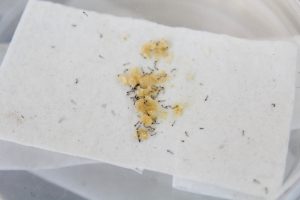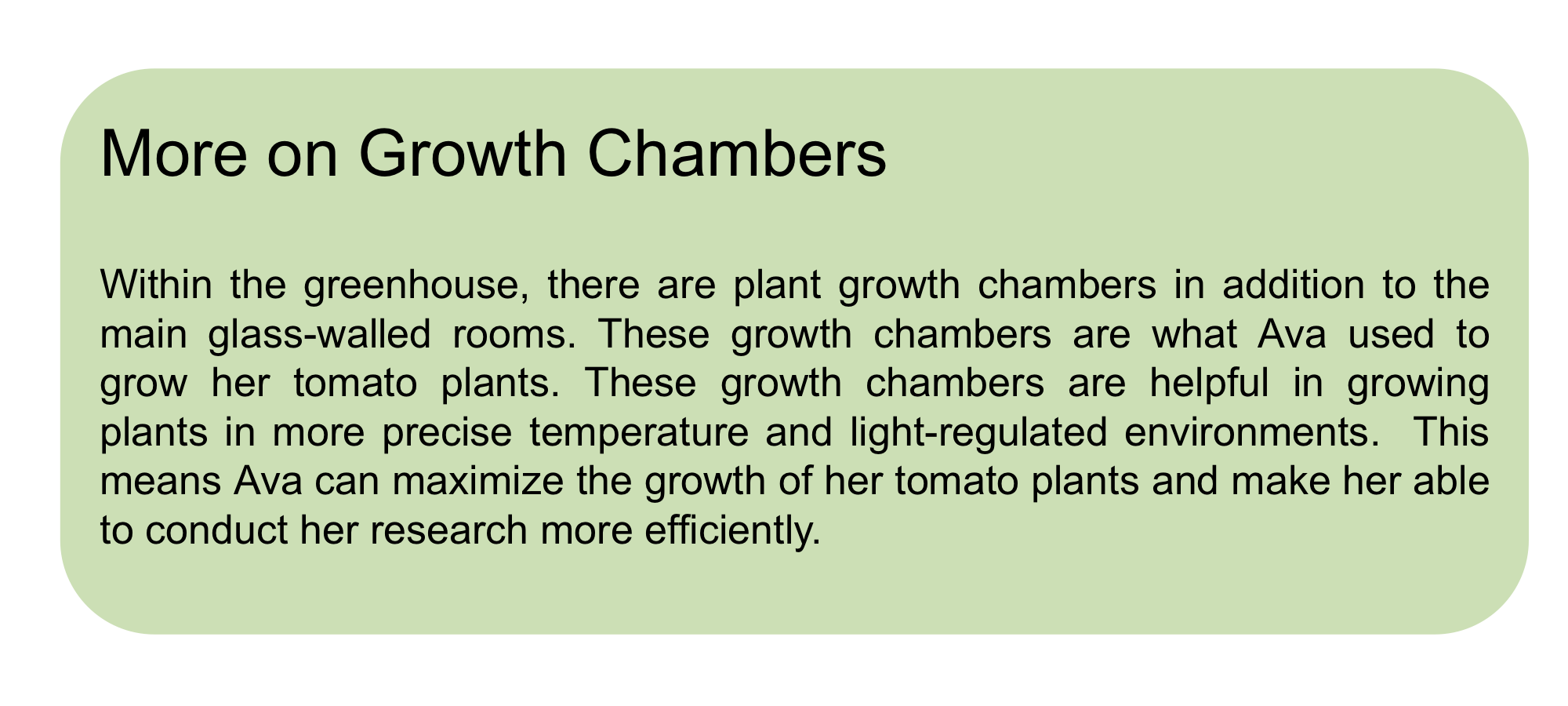
Have you ever planted any plants in a garden? Any tomatoes? Have you ever heard about lead contamination? Senior Ava Chamberlain (class of 2020; the first environmental studies major set to graduate) is using greenhouse equipment to study the effects that soils contaminated with heavy metals like lead have on the growth of tomato plants. Additionally, she is studying an insect species called beet armyworms which like to feed on tomato plants.
To study these relationships, Ava collected soils from vacant lots in Cleveland. The soil from this lot already had low levels of lead, but to understand the effects better Ava created two more lead treatment groups. She called the groups low (unaltered soil from the site in Cleveland), medium (adding some lead), and high (adding more lead). Ava is further dividing these groups by treating the plants with organic or synthetic fertilizers. Ava will test how much lead is available for the tomatoes to take up through their roots and if fertilizer type makes a difference. Once the plants reach maturity she is going to introduce beet armyworm larvae to measure growth and development effects for the plants of varying levels contamination and fertilizer. Ava is also measuring the plant’s responses to these attacks in comparison to one another to see which environmental issue the plant prioritizes. To protect themselves from both the armyworms and the contaminated soil the tomato plants have defense mechanisms, but can only utilize one mechanism at a time. This would have implications on how plants will deal with stressors, such as insect pests, in polluted environments.
Ava’s project also has another component that is more education-focused. Urban farming is becoming more prevalent especially with the emergence of widespread food deserts (areas where affordable fresh produce is scarce), yet many people are unaware of the risks involved with growing food in urban soil.1The risks include major health effects from eating plants that have been grown in contaminated soil, especially lead. To spread awareness and educate people on the possible risks and ways to remediate contaminated soils, Ava has written and designed an informative bulletin.

As in anything, Ava’s work was not without setbacks. When asked about obstacles she has faced Ava said: “it was a **** show”. Ava had been growing her tomatoes and was caring for them diligently when a fungal infection spread in her population killing every last plant and delaying her research by precious weeks. But the trouble doesn’t end there. While this round of tomatoes is successfully growing, her most recent obstacle is an escape of hundreds of vital insects. In fact, as she was being interviewed she was busy picking up these escaped armyworms one by one with a paintbrush in the hopes of capturing them alive. But all of this is just a day’s (weeks) work or as Ava puts it “ that’s just how science research works.”
Risks of Gardening in Urban Areas
As of 2007, more people live in cities than in rural areas. In these cities, urban agriculture has been increasing in popularity. Growing food in an urban environment can get fresh produce to places where it may be difficult to find. However, there are complications with growing plants in an urban environment. Many cities have significantly more polluted soils than that in rural environments.1 Some of the most dangerous pollutants to humans and other animals are heavy metals. If there are heavy metals pollutants in the soil of a garden, the plants will take up those metals and carry them in their tissues. If someone then eats those plants, they will be exposed to the dangerous heavy metals.
If you are trying to grow plants in an urban environment there are a couple of ways you can avoid heavy metal contamination. You can test the soil by taking a sample and sending it to a lab, but that can be expensive or impractical. Perhaps the most practical solution is to excavate the contaminated soil or build raised beds and fill with soil you are sure is pollutant-free. In some cases however, plants themselves can be used to remediate the soil. In these cases, the plants’ tendency to take up heavy metals is used to remove the pollutants from the contaminated soil.2
3. Chamberlain, Ava E. Interview. February 7, 2020.
